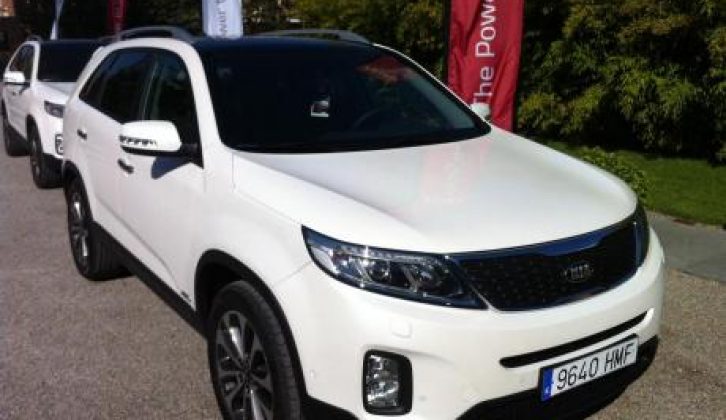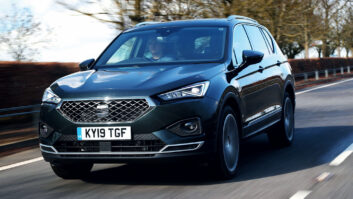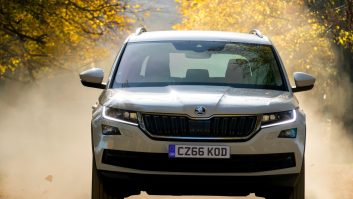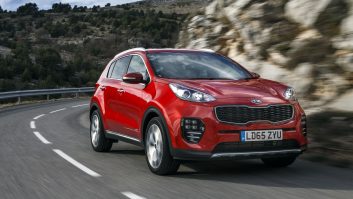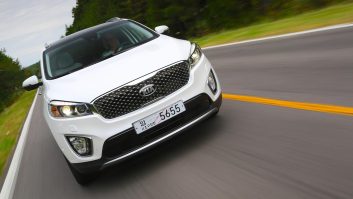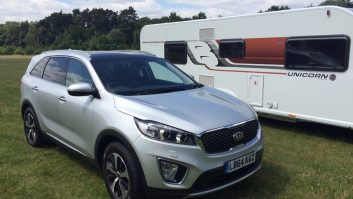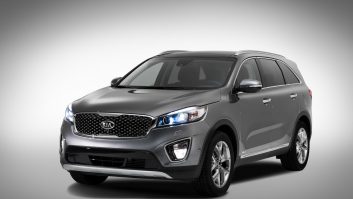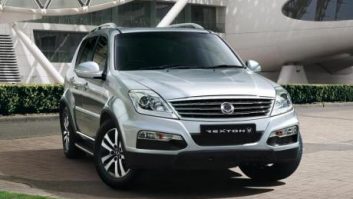[tl:gallery size=460×343]
FEW TOWCARS HAVE made as much impact as the Kia Sorento. The much-loved original is still a common sight at touring parks around the country, and while the second generation has received mixed reviews, it’s still a popular car in caravanning circles.
The car you see here may look like a mild refresh of the existing model, but the exterior nip-and-tuck doesn’t really do justice to the changes under the skin. I’ve been driving it this afternoon, and it’s a definite step forward over the version launched in 2010.
There’s a whole new platform and new suspension, shared with the latest Hyundai Santa Fe. It makes a big difference to the way the car drives.
On the twisting mountain roads of the Spanish test route the new Sorento felt tidier and more composed than the old car. It’s not as light on its feet as a BMW X3 but body roll in corners doesn’t get out of hand and the Sorento is unfazed by mid-corner bumps. The steering now features the Flex Steer system, which adjusts the power assistance at the touch of a button. Whichever level you choose there’s not a lot of feel through the wheel, but then B-road fun is not the be-all-and-end-all of a car like this.
What’s more important is whether the new Sorento will make a stable and confidence inspiring tug. There’s been no opportunity to tow with the car yet, but my gut feeling is that the new Kia will be considerably better than the old version. Driven solo at speed it feels secure and solid, and self-levelling suspension is now standard on all but the base-level car.
Most new 4x4s are lighter than their predecessors, but the new Sorento is still a hefty car. The kerbweight for manual models ranges from 1891kg to 1999kg, depending on specification. Go for an auto, and the kerbweights go from 1919kg to 2033kg.
Even working from the lowest kerbweight for a manual car, that gives a useful 85% match figure of 1607kg.
The legal towing limit is 2500kg (2000kg for the auto) and the maximum noseweight is 100kg.
Despite the high kerbweight, claimed economy figures are competitive with slimmer rivals like the Honda CR-V and Mitsubishi Outlander. The manual achieves 47.9mpg on the combined cycle and emits 155g/km of CO2. The auto returns 42.2mpg and emits 175g/km. The high-spec KX-3 model, which is only available with an automatic gearbox, returns 41.5mpg and emits 178g/km.
The new platform means there’s now more space inside, with small but worthwhile improvements in legroom for second and third row passengers. Every version comes with seven seats as standard. However, it’s a shame that the improved interior quality seen with Kia’s new Cee’d hatchback and Sportswagon hasn’t been carried through to the flagship of the range. Apparently this is because the Sorento is built in the US and US tastes and priorities have been given priority in revising the car. Kia says American customers aren’t concerned by the cars hard plastics and cheap-looking indicator stalks. I think it’s a shame, especially as Hyundai has made such strides with the interior finish of the new Santa Fe.
The bad news for anyone who still sees Kia as a budget brand is that entry-level price has gone up. The range now starts from £24,495 (including a £2000 early buyer discount which is in place until the end of the year), a substantial increase over the old model’s £21,605. In fairness that’s largely because the 2WD versions have been dropped from the line up. Kia also argues that perceptions of the brand have changed so much that higher prices aren’t offputting to customers. Compared with a Honda CR-V or Hyundai Santa Fe, Kia looks to have priced the car competitively.
The new Sorento is on sale now, with first customer deliveries in December.
